The Labor Market Recovery Has Been Strong Across the Country
The U.S. labor market recovered rapidly from the 2020 recession. Since January 2021, the economy has added over 14 million jobs, while the unemployment rate reached a 50-year low with record lows for Black workers, workers with disabilities, and workers without a high school diploma. President Biden has prioritized the labor market recovery by signing into law a set of policies—including the American Rescue Plan, a robust recovery package in the wake of the COVID-19 pandemic, and major investments in infrastructure and domestic manufacturing—intended to provide opportunity for American workers across the country.
However, the headline labor market numbers can obscure geographic variation. This blog analyzes the Bureau of Labor Statistics’ monthly State Employment and Unemployment data release, looking at the maximum and minimum state unemployment rates back to 1976 (the first year that data were collected for all states) to better understand the health of the labor market and the well-being of workers across the country. Our analysis indicates that compared with previous recessions, the recovery from the 2020 recession was remarkably equitable across states.
Historically, variation in state unemployment rates rises during recessions as certain states are hit disproportionately hard. This was particularly true in April 2020, at the height of the 2020 recession, when the state unemployment rates ranged from as high as 30.6 percent in Nevada—where more people live in urban areas and the economy is largely oriented around service industries particularly affected by COVID-related shutdowns—to 5.2 percent in Wyoming—where more people live in rural areas and employment is more evenly distributed among goods-producing and service industries. In April 2020, the gap between the highest and lowest state unemployment rates reached a staggering 25.4 percentage points, a new record by a substantial margin (Figure 1).
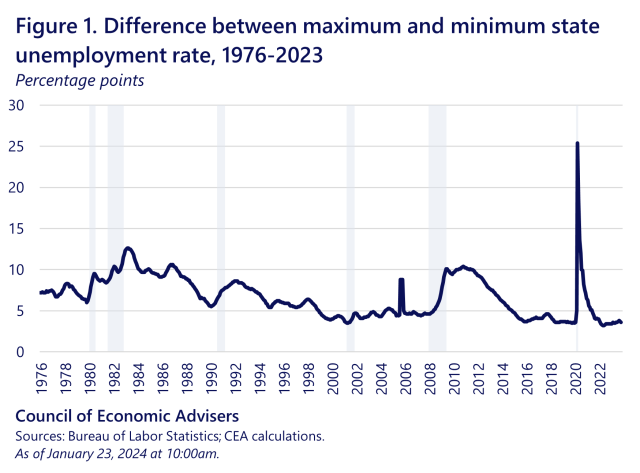
In the recovery from the pandemic, the gap between the highest and lowest state unemployment rates fell rapidly, hitting a record low at 3.2 percentage points in 2022 (previous record lows were in 2001 and 2019 when the labor market was at full employment). The shrinking of this gap came from a decline in the maximum state unemployment rate, which reached a record low of 5.2 percent (Figure 2) and occurred even as the minimum state unemployment rate also reached a record low of 1.6 percent (Figure 3). The remarkable 1.6 percent unemployment rate was in Maryland in September of 2023—it was the lowest state unemployment rate on record.
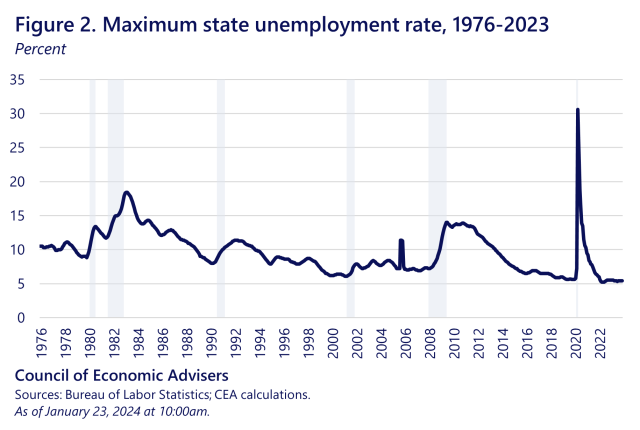
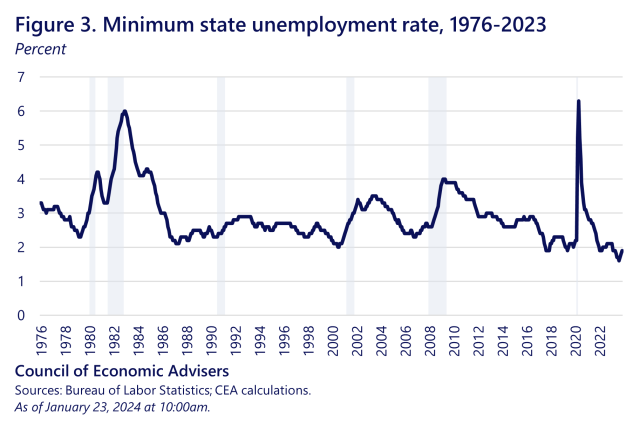
This rapid recovery is particularly striking in comparison with past recoveries. In the recovery from the Great Recession, for example, it took 69 months for the maximum unemployment rate to return to its pre-recession level of 7.2 percent. Following the COVID-19 recession, it took less than two years for the maximum state unemployment rate to recover to the pre-recession level (Figure 4a). Looking at the standard deviation in state unemployment rates reveals similar trends (Figure 4b).
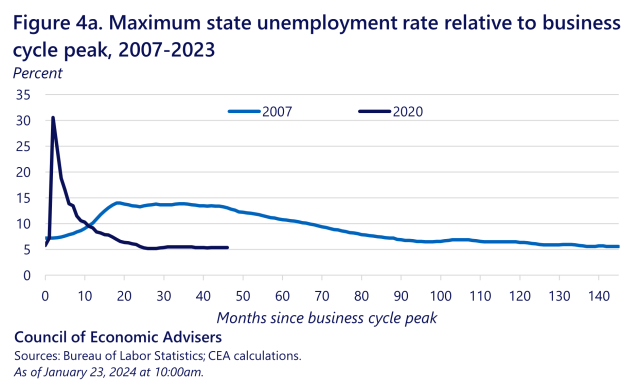
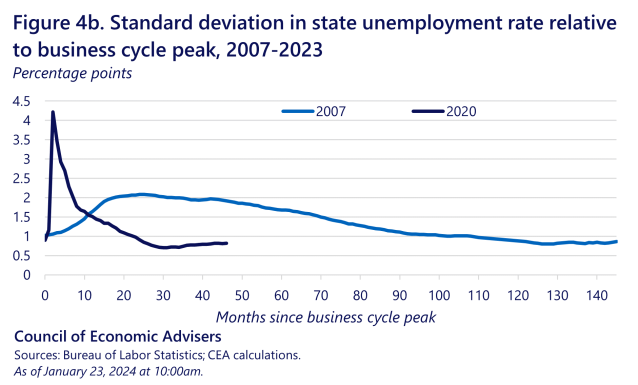
Moreover, state unemployment rates have stayed strikingly low (Figure 5). Over the course of 2023, 23 states set new record low unemployment rates. In the latest data released today, the lowest state unemployment rate was 1.9 percent. Meanwhile, the highest state unemployment rate was 5.4 percent—lower than at any point between 1976 and 2021 for the 22nd consecutive month. Such tight variation in state unemployment rates is not a foregone conclusion, and illustrates that if labor market gains are enjoyed equitably, then extraordinarily low national unemployment rates can translate into similarly low rates of joblessness across states and regions.
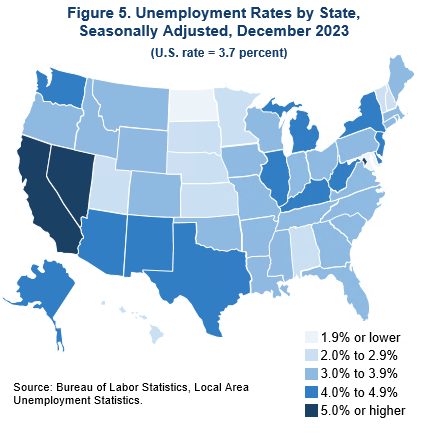
Past analyses by the Council of Economic Advisers have pointed to the relatively equitable COVID-19 recovery along racial and gender dimensions. Another central goal of the Biden-Harris Administration’s policies is equity across geographic boundaries. These state-level data provide further indication that the benefits of the strong labor market are spread across the states.

